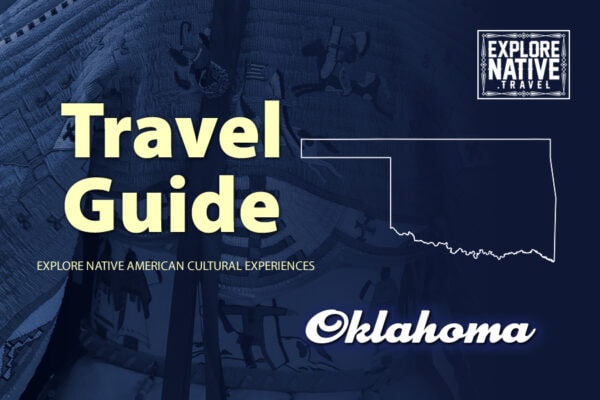Exploring Oklahoma’s Rich Tapestry: A Look at the State’s Diverse Tribes
Exploring Oklahoma’s Rich Tapestry: A Look at the State’s Diverse Tribes

Oklahoma, often called the "Sooner State," is renowned for its vibrant history, stunning landscapes, and, most importantly, its strong connection to Native American heritage. Home to 39 federally recognized tribes, Oklahoma boasts the largest Native American population of any state in the United States. This diverse tapestry of cultures, languages, and traditions adds a unique dimension to the state’s identity, making it a place where history and modernity intertwine.
This article delves into the fascinating world of Oklahoma’s Native American tribes, exploring their rich history, cultural significance, and the enduring legacy they continue to shape.
Related Articles: Exploring Oklahoma’s Rich Tapestry: A Look at the State’s Diverse Tribes
- The Mdewakanton Sioux: A Legacy Of Resilience And Renewal
- The Enigma Of Blue Eyes In India: A Journey Through Genetics, History, And Culture
- Alaska Native Corporations: A Legacy Of Resilience And Economic Empowerment
- The Richest Native American Reservations: A Look At Wealth And Sovereignty
- Unfurling The Meaning: A Deep Dive Into The Aboriginal Flag
A Legacy of Resilience and Survival
The history of Native Americans in Oklahoma is a testament to resilience and survival. For centuries, the land that is now Oklahoma was home to numerous tribes, each with its own unique language, customs, and beliefs. However, the arrival of European settlers in the 19th century brought about a period of forced relocation and cultural disruption.
The Indian Removal Act of 1830, a dark chapter in American history, led to the infamous "Trail of Tears," where thousands of Native Americans, including the Cherokee, Choctaw, Chickasaw, Creek, and Seminole, were forcibly removed from their ancestral lands in the Southeast and marched to what was then known as Indian Territory, now Oklahoma.
This forced relocation resulted in immense hardship and loss of life. Despite the trauma they endured, Native Americans in Oklahoma persevered, adapting to their new environment and maintaining their cultural identity. They established their own governments, schools, and communities, creating a vibrant and resilient presence in the state.
Diverse Cultures and Traditions
Oklahoma’s Native American tribes represent a diverse array of cultures and traditions. Each tribe possesses its own unique language, art forms, storytelling traditions, ceremonies, and spiritual beliefs.
For example, the Cherokee Nation, the largest tribe in Oklahoma, is renowned for its rich oral traditions, intricate beadwork, and the Cherokee syllabary, a unique writing system developed in the 19th century. The Choctaw Nation is known for its intricate basket weaving, traditional dances, and the Choctaw language, which is experiencing a resurgence in recent years.
The Chickasaw Nation is celebrated for its pottery, traditional storytelling, and the Chickasaw language, which is being revitalized through educational programs and cultural initiatives. The Creek Nation is known for its intricate beadwork, traditional dances, and the Creek language, which is being preserved through language immersion programs.

The Seminole Nation is renowned for its traditional storytelling, intricate beadwork, and the Seminole language, which is being revitalized through cultural programs and language immersion initiatives.
Modern-Day Impact and Contribution
Today, Oklahoma’s Native American tribes continue to play a vital role in the state’s economic, social, and cultural landscape. They operate successful businesses, casinos, and health care systems, contributing significantly to the state’s economy. They also actively engage in education, community development, and cultural preservation, ensuring that their traditions and heritage are passed on to future generations.
Tourism and Cultural Experiences
Oklahoma’s Native American heritage offers a wealth of tourism opportunities. Visitors can explore museums, cultural centers, and historical sites that showcase the rich history and traditions of the state’s tribes. They can also experience traditional dances, storytelling sessions, and art exhibitions that provide a glimpse into the vibrant culture of Oklahoma’s Native American communities.

Key Sites and Attractions
- Five Civilized Tribes Museum: Located in Muskogee, this museum showcases the history and culture of the Cherokee, Choctaw, Chickasaw, Creek, and Seminole nations.
- National Museum of the American Indian: While not located in Oklahoma, this museum in Washington, D.C., houses a significant collection of Native American art and artifacts, including those from Oklahoma tribes.
- The Trail of Tears National Historic Trail: This 2,200-mile trail commemorates the forced relocation of Native Americans from their ancestral lands in the Southeast to Indian Territory.
- Cherokee Heritage Center: Located in Tahlequah, this center offers a comprehensive overview of Cherokee history, culture, and traditions.
- Choctaw Nation Cultural Center: Located in Durant, this center showcases the rich history and culture of the Choctaw Nation.
- Chickasaw Cultural Center: Located in Sulphur, this center offers a glimpse into the history, culture, and traditions of the Chickasaw Nation.
- Creek Council House: Located in Okmulgee, this historic building served as the seat of government for the Creek Nation in the 19th century.
- Seminole Nation Museum: Located in Wewoka, this museum showcases the history and culture of the Seminole Nation.

Challenges and Opportunities
Despite their resilience and contributions, Oklahoma’s Native American tribes face a number of challenges, including poverty, lack of access to quality healthcare, and the preservation of their languages and traditions. However, they are also embracing opportunities to strengthen their communities, revitalize their cultures, and advocate for their rights.
Economic Development
Many Oklahoma tribes have successfully diversified their economies, creating jobs and generating revenue through gaming, tourism, and other businesses. They are also investing in education, healthcare, and infrastructure to improve the lives of their members.
Cultural Revitalization
Oklahoma tribes are actively working to revitalize their languages, traditions, and arts. They are offering language immersion programs, cultural festivals, and educational initiatives to ensure that their heritage is passed on to future generations.
Advocacy and Representation
Native American tribes in Oklahoma are actively advocating for their rights and interests, working to ensure that their voices are heard in state and federal government. They are also working to address issues such as healthcare, education, and environmental protection.
Conclusion
Oklahoma’s Native American tribes are an integral part of the state’s history, culture, and identity. They have endured hardship and resilience, preserving their traditions and contributing significantly to the state’s economic and social well-being. Their story is a testament to the enduring spirit of Native Americans and their commitment to preserving their heritage for future generations.
As we explore the rich tapestry of Oklahoma’s Native American tribes, we gain a deeper understanding of the state’s past, present, and future. By recognizing and appreciating their contributions, we can foster a spirit of respect, understanding, and collaboration that will benefit all Oklahomans.
FAQ about Indian Tribes in Oklahoma
Q: How many federally recognized tribes are there in Oklahoma?
A: There are 39 federally recognized tribes in Oklahoma.
Q: What are the Five Civilized Tribes?
A: The Five Civilized Tribes are the Cherokee, Choctaw, Chickasaw, Creek, and Seminole nations. They were known as the "Five Civilized Tribes" because they adopted many aspects of European culture, including written languages, agriculture, and government systems.
Q: What is the Trail of Tears?
A: The Trail of Tears refers to the forced relocation of Native Americans, including the Cherokee, Choctaw, Chickasaw, Creek, and Seminole, from their ancestral lands in the Southeast to Indian Territory (now Oklahoma) in the 1830s. The journey was marked by extreme hardship, disease, and death, leading to the loss of thousands of lives.
Q: What are some of the cultural traditions of Oklahoma’s Native American tribes?
A: Each tribe has its own unique traditions, including language, art forms, storytelling, ceremonies, and spiritual beliefs. Some common traditions include beadwork, basket weaving, pottery, traditional dances, and oral histories.
Q: What are some of the challenges faced by Oklahoma’s Native American tribes?
A: Challenges include poverty, lack of access to quality healthcare, and the preservation of their languages and traditions.
Q: What are some of the opportunities for Oklahoma’s Native American tribes?
A: Opportunities include economic development, cultural revitalization, and advocacy for their rights and interests.
Q: How can I learn more about Oklahoma’s Native American tribes?
A: You can visit museums, cultural centers, and historical sites, attend cultural events, and explore online resources. You can also support organizations that work to preserve Native American culture and heritage.

Closure
Thus, we hope this article has provided valuable insights into Exploring Oklahoma’s Rich Tapestry: A Look at the State’s Diverse Tribes. We thank you for taking the time to read this article. See you in our next article!


